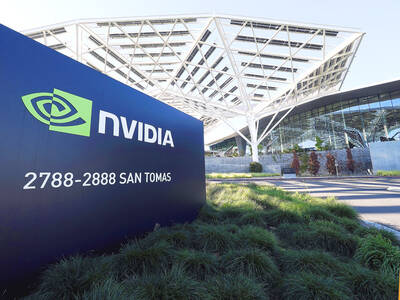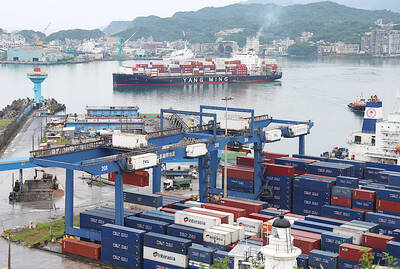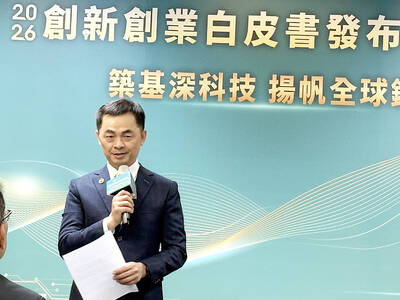People care what their avatars are wearing. When the virtual world Decentraland in June said users could make and sell their own clothing for avatars to wear on the site, Hiroto Kai stayed up all night designing Japanese-inspired garments.
Selling kimonos for about US$140 each, he said he made US$15,000 to US$20,000 in just three weeks.
While the idea of spending real money on clothing that does not physically exist is baffling to many, virtual possessions generate real sales in the “metaverse” — online environments where people can congregate, walk around, meet friends and play games.
Digital artist and Japan enthusiast Kai’s real name is Noah. He is a 23-year-old living in New Hampshire in the US.
After making as much in those three weeks as he would earn in a year at his music store job, he quit to become a full-time designer.
“It just took off,” Kai said. “It was a new way to express yourself and it’s walking art, that’s what’s so cool about it... When you have a piece of clothing, you can go to a party in it, you can dance in it, you can show off and it’s a status symbol.”
In Decentraland, clothing for avatars — known as “wearables” — can be bought and sold on the blockchain in the form of a crypto asset called a non-fungible token (NFT).
Kai’s kimonos include exquisite crushed blue velvet pieces with golden dragon trim.
NFTs exploded in popularity earlier this year, as speculators and crypto enthusiasts flocked to buy the new asset, which represents ownership of online-only items such as digital art, trading cards and land in online worlds.
The niche crypto assets are also capturing the attention of some of the world’s biggest fashion companies, keen to associate themselves with a new generation of gamers — although most of their forays so far are for marketing.
Louis Vuitton launched a metaverse game where players can collect NFTs, and Burberry has created branded NFT accessories for Blankos Block Party, a game owned by Mythical Games Inc. Gucci has sold non-NFT clothing for avatars within the game Roblox.
“Your avatar represents you,” said Imani McEwan, a Miami-based fashion model and NFT enthusiast. “Basically what you’re wearing is what makes you who you are.”
McEwan said he has spent US$15,000 to US$16,000 on 70 NFT wearable items since January, using profit from cryptocurrency investments. His first purchase was a bitcoin-themed sweater and he recently bought a black beret designed by his friend.
The overall size of the NFT wearables market is difficult to establish. In Decentraland alone wearable sales volume totaled US$750,000 in the first half of this year, up from US$267,000 in the same period last year, said NonFungible.com, a Web site which tracks the NFT market.
Some proponents say wearables and shopping in virtual shops could be the future of retail.
“Instead of scrolling through a feed and shopping online, you can have a more immersive brand experience by exploring a virtual space — whether you are shopping for your online avatar or buying physical products that can be shipped to your door,” said Julia Schwartz, director of Republic Realm, a US$10 million virtual real-estate investment vehicle that has built a shopping mall in Decentraland.
For NFT enthusiasts, online fashion does not replace physical purchases.
However, Paula Sello and Alissa Aulbekova, cofounders of the digital fashion start-up Auroboros, say it could be an environmentally friendly alternative to fast fashion.
Customers can send Auroboros an image of themselves and have clothing digitally added for £60 to £1,000 (US$83.19 to US$1,386.50).
Sello said that the virtual garment concept could limit the waste of consumers buying clothes to wear on social media, citing a 2018 Barclaycard study which found that 9 percent of British shoppers have bought clothes for social media photographs, then returned them.
“We need to have the shift now in fashion. The industry simply cannot continue,” Sello said.
Virtual sneaker company RTFKT sells limited-edition NFTs representing sneakers that can be “worn” in some virtual worlds or on social media via a Snapchat filter.
“It really took off when COVID started and loads of people went more online,” RTFKT cofounder and chief executive Steven Vasilev said.
The company has posted US$7 million in sales, with limited edition sneakers selling in auctions for US$10,000 to US$60,000, he said.
While the majority of customers are in their 20s and 30s, some are as young as 15.
RTFKT’s NFTs can also be used as a token to receive a free physical version of the shoe, but one in 20 customers do not redeem that token.
“I didn’t do the redemption stuff because I couldn’t be bothered,” said Jim McNelis, a Dallas-based NFT buyer who founded NFT company nft42. “I try to avoid the physical stuff as much as possible.”

CHIP RACE: Three years of overbroad export controls drove foreign competitors to pursue their own AI chips, and ‘cost US taxpayers billions of dollars,’ Nvidia said China has figured out the US strategy for allowing it to buy Nvidia Corp’s H200s and is rejecting the artificial intelligence (AI) chip in favor of domestically developed semiconductors, White House AI adviser David Sacks said, citing news reports. US President Donald Trump on Monday said that he would allow shipments of Nvidia’s H200 chips to China, part of an administration effort backed by Sacks to challenge Chinese tech champions such as Huawei Technologies Co (華為) by bringing US competition to their home market. On Friday, Sacks signaled that he was uncertain about whether that approach would work. “They’re rejecting our chips,” Sacks

Taiwan’s exports soared 56 percent year-on-year to an all-time high of US$64.05 billion last month, propelled by surging global demand for artificial intelligence (AI), high-performance computing and cloud service infrastructure, the Ministry of Finance said yesterday. Department of Statistics Director-General Beatrice Tsai (蔡美娜) called the figure an unexpected upside surprise, citing a wave of technology orders from overseas customers alongside the usual year-end shopping season for technology products. Growth is likely to remain strong this month, she said, projecting a 40 percent to 45 percent expansion on an annual basis. The outperformance could prompt the Directorate-General of Budget, Accounting and

NATIONAL SECURITY: Intel’s testing of ACM tools despite US government control ‘highlights egregious gaps in US technology protection policies,’ a former official said Chipmaker Intel Corp has tested chipmaking tools this year from a toolmaker with deep roots in China and two overseas units that were targeted by US sanctions, according to two sources with direct knowledge of the matter. Intel, which fended off calls for its CEO’s resignation from US President Donald Trump in August over his alleged ties to China, got the tools from ACM Research Inc, a Fremont, California-based producer of chipmaking equipment. Two of ACM’s units, based in Shanghai and South Korea, were among a number of firms barred last year from receiving US technology over claims they have

BARRIERS: Gudeng’s chairman said it was unlikely that the US could replicate Taiwan’s science parks in Arizona, given its strict immigration policies and cultural differences Gudeng Precision Industrial Co (家登), which supplies wafer pods to the world’s major semiconductor firms, yesterday said it is in no rush to set up production in the US due to high costs. The company supplies its customers through a warehouse in Arizona jointly operated by TSS Holdings Ltd (德鑫控股), a joint holding of Gudeng and 17 Taiwanese firms in the semiconductor supply chain, including specialty plastic compounds producer Nytex Composites Co (耐特) and automated material handling system supplier Symtek Automation Asia Co (迅得). While the company has long been exploring the feasibility of setting up production in the US to address